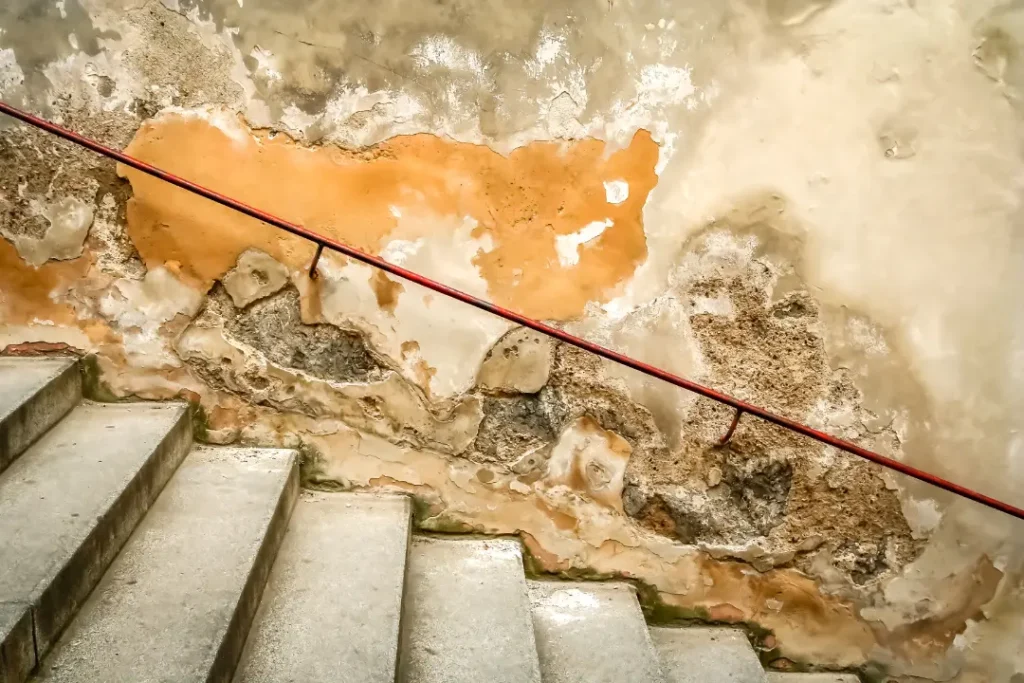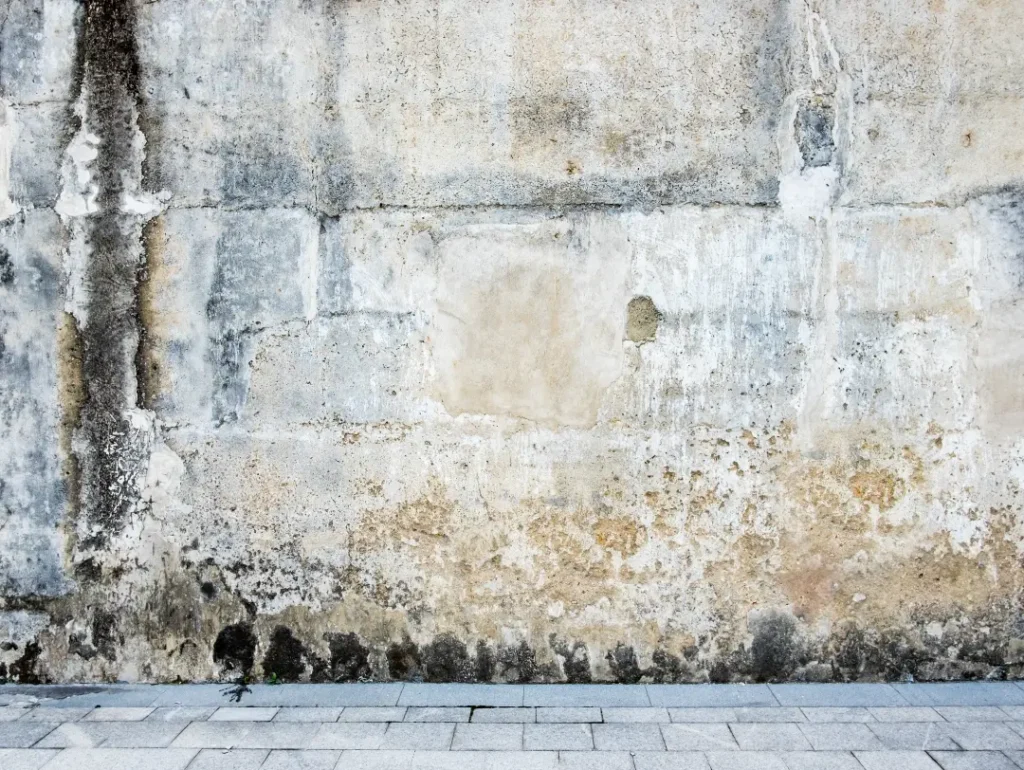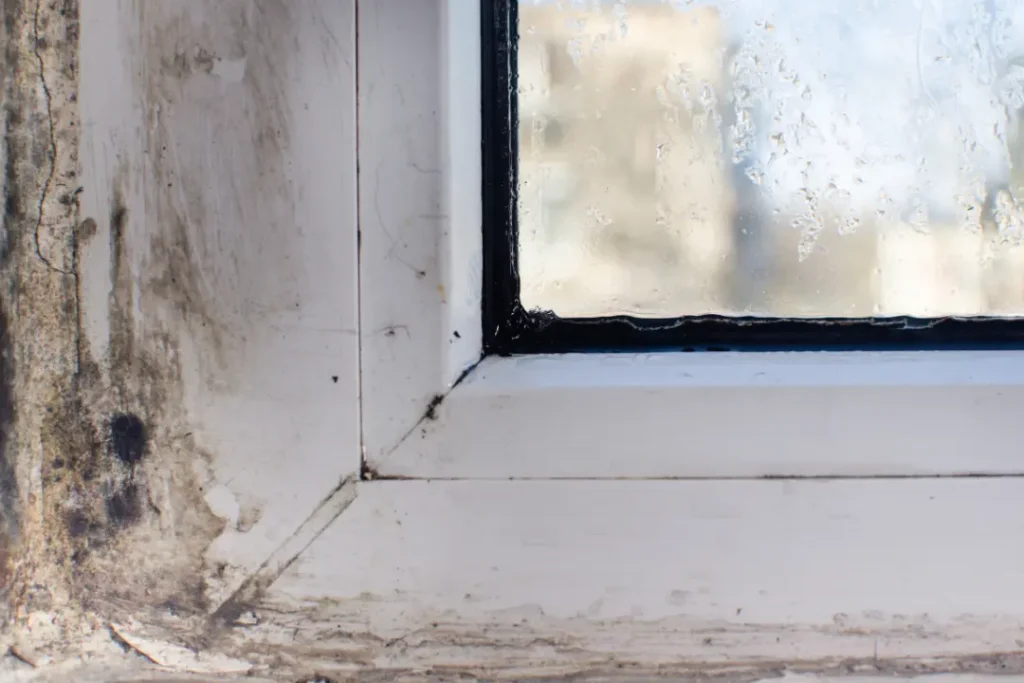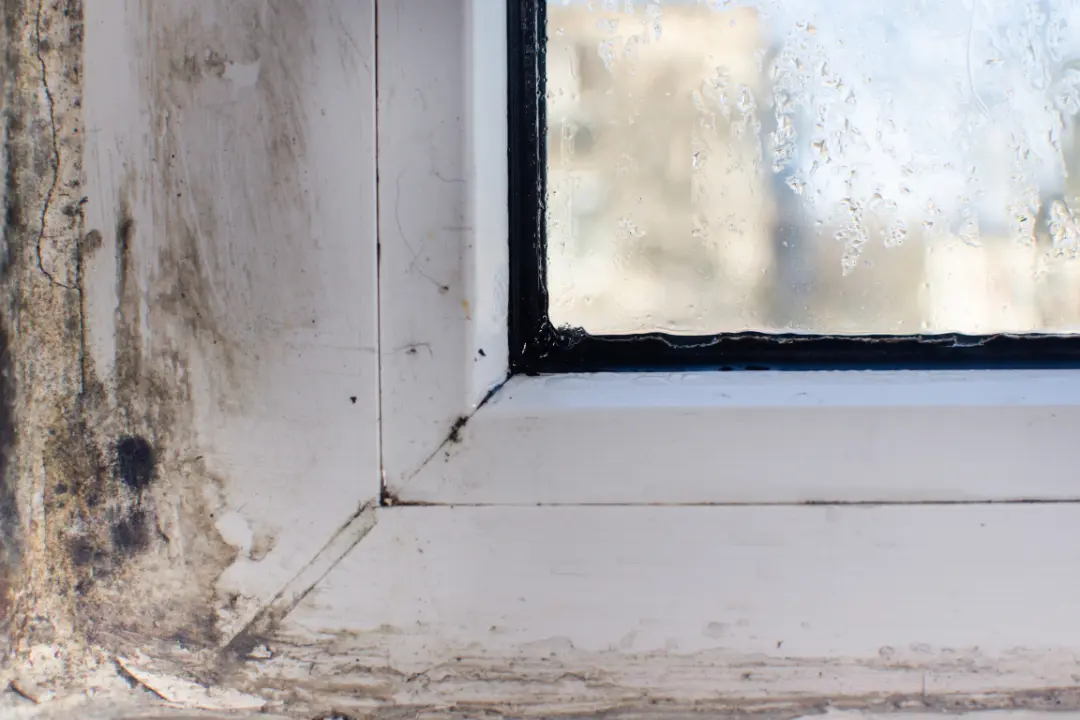Damp in homes poses serious health risks and can significantly deteriorate indoor air quality. Specifically, the health risk of damp in homes ranges from respiratory problems like asthma and skin conditions to mental health issues.
In rare cases, prolonged exposure to damp and mould has resulted in tragic death, highlighting the seriousness of the health risk.
Understanding these risks is crucial for maintaining a safe and healthy living environment.
Key Takeaways
- Damp in homes can be caused by rising damp, penetrating damp, and condensation damp, which are driven by factors like leaks, blocked gutters, and poor ventilation.
- Living in damp environments poses significant health risks, including respiratory issues, skin conditions, and mental health problems, especially for vulnerable populations like children and the elderly. However, healthy people are generally less likely to experience severe health effects from damp and mould exposure.
- Effective damp management requires a combination of adequate ventilation, prompt repairs of leaks and structural issues, and, if needed, professional damp-proofing services.
Damp and Its Causes
Damp in the home is the presence of excess or unwanted moisture within a building, which can lead to various issues over time. Damp and mould are persistent problems in homes and other indoor spaces, presenting serious health risks for occupants. According to the UK Health Security Agency, tackling damp and mould is essential to prevent a range of adverse health outcomes.
Moisture can infiltrate buildings from several sources. Leaks from damaged pipes, blocked gutters, and poorly maintained roofs are common culprits. Also, environmental factors such as heavy rainfall can exacerbate these issues, leading to significant moisture build-up. Water vapour from activities like cooking, bathing, and drying clothes indoors can accumulate and lead to condensation damp if not properly ventilated.
Poor ventilation can also trap humid air inside, further contributing to the problem. Energy efficiency measures, if not properly managed, can also contribute to developing damp by trapping moisture indoors.
Generally, the three most common types of damp are:
- Rising damp occurs when moisture from the ground rises up through walls and floors.
- Penetrating damp results from structural defects that allow water to seep through walls.
- Condensation damp, which is usually caused by high indoor humidity.
Living in a damp environment can be uncomfortable and unhealthy. The musty smell and visible mould are just the beginning. Over time, damp can affect a building’s structural integrity, leading to costly repairs.

Health Risks Associated with Damp
Living in damp environments can lead to various health effects, including respiratory problems, skin irritation, and mental health issues.
The primary health hazard associated with damp conditions is mould, which can cause serious health issues. Mould spores thrive in damp conditions, leading to respiratory problems, skin irritation, and even potential toxicity. Common types of mould found in damp environments include Penicillium, Aspergillus, and Cladosporium.
Prolonged exposure to damp may also cause gastrointestinal problems such as nausea and diarrhoea. The general symptoms of ill health from damp environments include fatigue, which can severely impact daily life. Respiratory symptoms such as shortness of breath and coughing are a common complaint among individuals exposed to damp and mould.
The health risks associated with dampness are significant and should not be underestimated. Let’s examine specific health issues related to living in damp environments, starting with respiratory illnesses.
1: Respiratory Issues Due to Damp
Damp environments significantly increase the risk of respiratory diseases. Inhalation of mould spores is linked to respiratory infections and increased airway inflammation. Individuals with pre-existing conditions, such as cardiovascular disease, are at an increased risk of experiencing health issues related to damp and mould.
Mould and dampness are notorious for triggering allergic airway diseases like asthma and bronchitis. Allergic rhinitis, an inflammatory condition of the nasal passages, is also commonly triggered by exposure to mould and damp environments.
Common lung conditions associated with damp environments include asthma, chronic obstructive pulmonary disease (COPD), and other lung disorders. Other lung diseases, including cystic fibrosis, are also at increased risk of complications from mould exposure. Individuals with cystic fibrosis are particularly vulnerable to fungal infections such as aspergillosis due to mould exposure.
Symptoms of respiratory problems from damp conditions include difficulty breathing, chest tightness, coughing, and wheezing. These symptoms can sometimes be mistaken for the common cold, but may persist or worsen with ongoing exposure to damp.
Specific immuno-responses to allergens like Alternaria alternata, a common airborne mould found in damp environments, can worsen asthma symptoms in sensitive individuals.
Lower respiratory tract exposure in damp environments can cause cough, phlegm, wheeze, chest tightness, shortness of breath, and an allergic reaction. Additionally, damp conditions can cause symptoms like nasal congestion, sneezing, a runny or itchy nose, and throat irritation.
Living in damp homes can, therefore, be particularly hazardous for people with existing lung conditions. If airway inflammation persists for long periods, it can lead to permanent changes in the respiratory system. Mould exposure can have significant effects on the respiratory system, especially for those with pre-existing lung diseases.
2: Skin Conditions Linked to Damp
Damp environments can lead to various skin conditions, including eczema, fungal infections, and allergic reactions. Damp environments can also create a suitable environment for dust mites, which can lead to allergic reactions and exacerbate skin conditions. Individuals with existing skin issues, such as atopic eczema, are particularly sensitive to damp and mould.
Skin conditions like eczema can be exacerbated by damp conditions, which also lead to fungal infections. Allergic reactions triggered by mould can manifest as sneezing, a runny nose, red eyes, and skin rashes.
Touching mould spores or being in close contact with them can cause skin irritation and rashes. Toxic black mould, in particular, can lead to severe skin reactions if not addressed promptly.
Removing mould and preventing mould from returning is essential to avoid these health conditions. Maintaining a dry and well-ventilated home reduces the risk of skin irritation and other health problems.

3: Mental Health Impacts of Living with Damp
The psychological stressors of living in damp homes can profoundly impact overall well-being. The stress and anxiety of living in a damp home can take a toll on both mental and physical health. Common mental health issues related to damp conditions include anxiety and depression, which can manifest as neuropsychiatric symptoms.
Stress from damp living conditions can result in unhealthy coping mechanisms, such as increased smoking and alcohol consumption. The constant worry about potential health impacts and concerns about property damage can take a toll on mental health. Promptly addressing damp issues can alleviate these psychological stressors and improve overall quality of life.
Vulnerable Populations at Greater Risk
Certain populations are at greater health risk from damp-related health issues, including:
- Children
- The elderly
- Pregnant women
- Individuals with weakened immune systems or existing health problems
Children, especially babies and toddlers, are most susceptible to respiratory conditions related to damp and mould. Individuals with severely weakened immune systems face significant health risks. They are particularly vulnerable to potentially fatal infections in the brain, heart, and kidneys after exposure to mould.
Prolonged exposure to damp environments can lead to adverse health outcomes, making it crucial to identify and address damp issues. By taking proactive measures, we can protect those most vulnerable and prevent tragic outcomes. Providing safe and healthy living conditions for all is a shared responsibility.
Legal Standards and Regulations
In the UK, damp and mould are especially common in the private rented sector, but they can affect any indoor space where moisture is not properly managed. The Housing Act and the Environmental Protection Act set out legal standards and regulations for landlords to follow in maintaining their properties and preventing damp and mould. The Housing Act requires landlords to ensure that their properties are free from hazards, including damp and mould, while the Environmental Protection Act enables local councils to take action against landlords who fail to address damp and mould issues.
Landlords must also comply with the Building Regulations, which include requirements for heating and ventilation systems to prevent excess moisture and mould growth. Failure to comply with these regulations can result in financial penalties and legal action. Additionally, the Tenant Act provides tenants with the right to report damp and mould issues to their landlord, who must then take prompt action to address the problem and prevent further adverse health effects.
Landlords have a legal obligation to maintain their properties in a condition that is safe and free from health hazards. This includes ensuring that heating and ventilation systems are adequate to prevent the build-up of excess moisture and mould growth. The Environmental Protection Act empowers local councils to intervene when landlords neglect their responsibilities, potentially leading to financial penalties and enforcement actions.
By adhering to these legal standards and regulations, landlords can provide safe and healthy living environments for their tenants, while tenants can feel confident in their right to a habitable home.
How to Prevent and Address Damp in Homes
Preventing and addressing dampness in homes requires a multi-faceted approach. One of the most effective ways to prevent damp and mould is to improve ventilation throughout the home. Enhancing ventilation is key to reducing damp and mould growth.
Taking proactive measures can effectively prevent mould. This includes using products to counteract mould and adopting good habits such as cooking with lids on and not drying clothes on radiators. Addressing leaks and moisture issues in the home is also crucial. This involves removing water-damaged or damp materials if they cannot be cleaned or completely dried, and proactively identifying moisture problems.
When removing mould, individuals should avoid contact with mould as much as possible, especially those in vulnerable groups, to reduce health risks. For larger mould areas or persistent damp issues, it is recommended that qualified professionals be consulted for comprehensive assessments and interventions.
Landlords must comply with legal requirements, including adherence to Building Regulations, when addressing damp problems to ensure safe living environments. Reducing mould exposure is essential for minimising health risks associated with damp environments.
Enhancing insulation to a minimum of 270mm in the loft can also help manage temperature and moisture levels more effectively. Let’s explore specific measures you can take to prevent and address damp in your home.
Effective Ventilation Systems
Proper ventilation systems are essential for removing moist air generated in kitchens and bathrooms, thereby preventing mould build-up. Condensation is a common issue that contributes to mould in bathrooms.
You can enhance ventilation and moisture control by using extractor fans, closing internal doors when cooking or showering, and drying laundry outdoors. Safety concerns and noise may prevent tenants from adequately ventilating their homes, but proper guidance can address these issues.
Operational ventilation systems in bathrooms are crucial for removing moist air from showering and bathing. An overhead cooker hood is also recommended for kitchen ventilation.
Extractor fans in kitchens should be installed close to the hob and linked to the outside or a central unit. Humidity-controlled fans are a beneficial option for landlords to improve kitchen ventilation.
Repair Leaks and Structural Issues
Promptly addressing leaks is crucial in preventing dampness in homes. Repairing leaks significantly reduces the risk of damp and mould in homes. This includes fixing leaking pipes, unblocking gutters, and ensuring that roofs and external walls are well-maintained. Repairing leaks leads to healthier living conditions by preventing mould growth.
Neglecting structural issues can lead to severe damp problems, affecting building materials and compromising your home’s integrity. Regular maintenance and timely repairs are essential to keeping your home dry and safe. Staying vigilant and addressing issues promptly can prevent the development of dampness and its associated health risks.
Importance of Professional Damp Proofing Solutions
Consulting professionals provide tailored solutions for effective damp proofing and moisture management. Consulting professionals is essential for effectively addressing a mould problem and ensuring long-term solutions. A professional damp survey is crucial for identifying damp sources and formulating targeted treatment plans.
Here at Environ Property Services, we offer comprehensive damp survey and damp proofing, ensuring that your home remains dry and protected.
Our professional damp-proofing solutions address both rising and penetrating damp, providing long-term protection against moisture issues. We also specialise in customised restoration methods that maintain the historical significance of buildings while effectively addressing damp issues.
The Role of Landlords and Tenants
As a landlord, it is your responsibility to address damp issues once tenants report them. This includes identifying the source of the dampness and carrying out the necessary repairs without placing any blame on the tenants. If landlords fail to address reported damp issues, they may face legal consequences and enforcement actions.
Tenants should promptly report any damp issues and should be assured that they will not be held responsible for dampness caused by the property’s conditions. Housing associations also play a crucial role in maintaining property standards and ensuring tenant health.
Both landlords and tenants have important roles in managing damp issues. By collaborating effectively, landlords and tenants can create safe and healthy living environments in rented accommodations.
Energy Efficiency Measures to Combat Damp
Energy-efficient homes are easier to heat and less prone to damp, provided ventilation is adequate. Government schemes are available to support private landlords in retrofitting their properties with energy-efficient technologies. Double glazing reduces heat loss by up to 50% compared to single glazing. The airtight seal in double-glazed windows helps minimise drafts and prevent condensation. Improving home insulation enhances energy efficiency and decreases the likelihood of damp. Investing in energy-efficient windows can lead to lower energy bills over time.
Better insulation reduces energy consumption and lowers the carbon footprint. Therefore, upgrading to modern double glazing significantly enhances home comfort by maintaining consistent indoor temperatures.
By adhering to these standards and taking advantage of available support, you can create healthier and more energy-efficient living environments that are less prone to excess moisture and damp.

Environ Property Services: The Reliable Company for Lasting Damp Solutions
At Environ Property Services, we are dedicated to providing seamless and effective damp proofing London solutions tailored to your specific needs.
Our experienced team conducts thorough assessments and offers treatments that ensure the complete protection of your home against rising damp, penetrating damp, and condensation. You deserve a safe and healthy living environment, and we’re here to deliver just that.
Our commitment goes beyond just fixing damp problems; we aim to restore your peace of mind. With every service, we guarantee lasting results and quality craftsmanship so you can feel confident in the safety of your property. Trust us to handle your concerns with care and expertise, ensuring that we pay attention to every detail in the damp proofing process.
Experience That Matters for Every Property Type
When it comes to damp proofing, there’s no one-size-fits-all solution. Our skilled damp specialists are well-versed in the complexities of damp issues unique to period properties and historic structures. We appreciate the importance of preserving the architectural integrity of these homes while providing modern solutions to age-old problems.
With years of experience and a genuine passion for restoring and protecting your property, our team is equipped to tackle even the most challenging damp-related issues. We are committed to delivering high-quality, dependable services that exceed your expectations and keep your home safe for years to come.
Choose Environ Property Services for Lasting Peace of Mind
We offer reliable treatments and exceptional customer service, ensuring that your experience is as smooth and stress-free as possible.
Our clients trust us because we take the time to listen, assess, and tailor our services to fit their specific needs. Whether you’re facing rising damp or need specialist treatment for a historic property, we have the expertise to provide thorough, effective solutions tailored just for you.
Choose us for all your damp proofing needs, and join the many satisfied customers who have entrusted their homes to our capable hands. Request a fast quote today.
Frequently Asked Questions
What are the common types of damp in homes?
The common types of damp in homes are rising damp, penetrating damp, and condensation damp. Identifying visible signs of damp early can help prevent more serious issues. Each type stems from different sources: rising damp from groundwater, penetrating damp from structural defects, and condensation damp from high indoor humidity.
What health risks are associated with damp environments?
Damp environments pose significant health risks, including respiratory issues like asthma and bronchitis, skin irritation, and mental health problems. Addressing moisture in living spaces is crucial to mitigate these risks effectively.
What health problems can a damp house cause?
A damp house can trigger or worsen respiratory issues like asthma, sinus infections, and bronchitis. It may also cause coughing, skin irritation, and fatigue due to the growth of mould and bacteria in humid environments.
Is sleeping in a damp room bad for you?
Yes, sleeping in a damp room can negatively impact your health. Prolonged exposure to moisture and mould spores at night may lead to breathing difficulties, disturbed sleep, and allergic reactions.
How long does it take for damp to affect your health?
Health effects can appear within days or weeks, depending on exposure levels and individual sensitivity. Children, the elderly, and people with pre-existing conditions are especially vulnerable to rapid onset symptoms.
Does rising damp affect health?
Yes, rising damp can lead to mould growth and increased indoor humidity, both of which contribute to poor air quality and can cause respiratory illnesses and allergic reactions over time.
How can I prevent dampness in my home?
To prevent dampness in your home, ensure adequate ventilation, promptly fix any leaks, and consider professional damp proofing measures. Additionally, use extractor fans, keep internal doors closed during cooking or showering, and dry laundry outdoors to lower moisture levels.
What role do landlords and tenants play in addressing damp issues?
Landlords are obligated to repair damp issues upon notification and must adhere to legal standards for health safety. Landlords must ensure their properties are fit for human habitation, adhering to legal standards for health and safety. Tenants should report problems quickly to maintain a safe living environment. Collaboration between both parties is essential to effectively address damp concerns.
Conclusion
Damp in homes is a pervasive issue that can lead to serious health problems and structural damage if not addressed promptly. Understanding the causes of dampness, such as rising damp, penetrating damp, and condensation damp, is crucial for implementing effective solutions. The health risks associated with damp, including respiratory issues, skin conditions, and mental health impacts, highlight the importance of maintaining a dry and well-ventilated home.
Preventing and addressing damp involves a combination of effective ventilation, prompt repair of leaks and structural issues, and professional damp proofing solutions. Remember to choose Environ Property Services for comprehensive damp proofing and restoration services, ensuring that your home remains dry and protected. By taking proactive steps to address damp, you can protect your health and your property..

